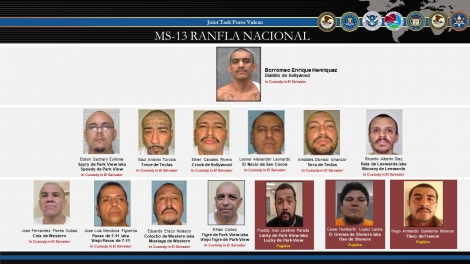MS-13 Gang Member Pleads Guilty To Racketeering Conspiracy Involving Murder, Attempted Murder
By a Biometrica staffer
Moises Alexis Reyes-Canales of Maryland pled guilty on May 6 to charges of conspiracy to participate in a racketeering enterprise that involved the murder of one person and the attempted murder of two others in Annapolis. Reyes-Canales, 23, aka Sicopita, was part of the MS-13 or Mara Salvatrucha criminal gang from March 2016, according to his plea agreement and other court documents, the Department of Justice said in a statement.
The person Reyes-Canales murdered was a suspected rival gang member. As a member of MS-13, Reyes-Canales participated in a racketeering conspiracy that included assaults, murder, attempted murder, robbery, and drug trafficking. He admitted to taking part in the murder of the suspected rival gang member mentioned earlier.
Between January 2016 and February 2017, he and other MS-13 members and associates sold marijuana to raise funds for the gang. The proceeds were used for the purchase of more narcotics and weapons, among other purposes, to send to MS-13 members and associates in other states and in El Salvador.
“This case illustrates that gang organizations are driven by greed and profit no matter the cost to innocent lives or our communities,” said James Mancuso, Special Agent in Charge for the Homeland Security Investigations’ (HSI) Baltimore Field Office.
Other co-defendants in the case have pled guilty over the years. Six of them, in total, were named by the DOJ in a statement published on March 30, 2018, including Reyes-Canales, in connection with several activities they carried out as members of MS-13.
In December 2019, one of the co-defendants, Marlon Cruz-Flores (aka El Lunatic), then aged 24, was sentenced to 38 years in federal prison, followed by five years of supervised release. His charges were similar to those that Reyes-Canales faces: conspiracy to participate in a racketeering enterprise and for using, carrying, and discharging a firearm during a crime of violence, in connection with his MS-13 gang activities. Manuel Martinez-Aguilar, aka Zomb, was sentenced to 24 years, also for his activities as part of the gang.
Co-defendant Fermin Gomez-Jimenez, 23, pled guilty to conspiracy to participate in a racketeering enterprise and to using, carrying, and discharging a firearm during a crime of violence and is scheduled to be sentenced on May 18. Co-defendant David Diaz-Alvarado, 20, also pled guilty to murder in aid of racketeering in connection with his MS-13 gang activities.
Co-defendant, Juan Carlos Sandoval-Rodriguez, 23, was convicted on Oct. 31, 2019, of murder in aid of racketeering, and conspiracy to commit murder in aid of racketeering after an 11-day jury trial. He faces a mandatory sentence of life in prison at his sentencing, which will be scheduled at a later date.
All of the defendants remain detained, the DOJ said on May 6, Thursday. “The violence perpetrated by Reyes-Canales and his fellow MS-13 members was brutal and tragic and is totally unacceptable,” Acting U.S. Attorney Jonathan F. Lenzner of the District of Maryland said in the DOJ statement.
Reyes-Canales and the government have agreed that he will be sentenced to 35 years in federal prison, if the court accepts his plea terms.

In January 2021, an indictment was unsealed in Central Islip, New York, charging 14 of the world’s highest-ranking MS-13 leaders. Those leaders are known as the Ranfla Nacional, which operated as the Organization’s Board of Directors, and directed MS-13’s violence and criminal activity around the world for almost two decades. Defendant Borromeo Enrique Henriquez, aka Diablito de Hollywood, is widely recognized as the most powerful member of the Ranfla Nacional.
Three of the indicted defendants, Fredy Ivan Jandres-Parada, aka Lucky de Park View and Lacky de Park View, Cesar Humberto Lopez-Larios, aka El Grenas de Stoners and Oso de Stoners, and Hugo Armando Quinteros-Mineros, aka Flaco de Francis, remain at large and should be considered armed and dangerous, the DOJ said in the January statement.
In approximately 2002, the defendants and other MS-13 leaders began establishing a highly organized, hierarchical command and control structure as a means to effectuate their decisions and enforce their orders, even while in prison. They directed acts of violence and murder in El Salvador, the United States, and elsewhere, established military-style training camps for its members and obtained military weapons such as rifles, handguns, grenades, improvised explosive devices (IED) and rocket launchers, the DOJ added in January.